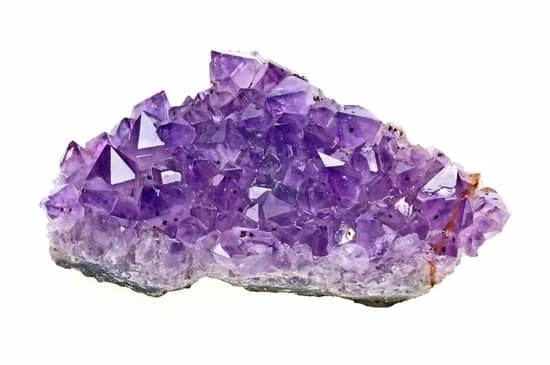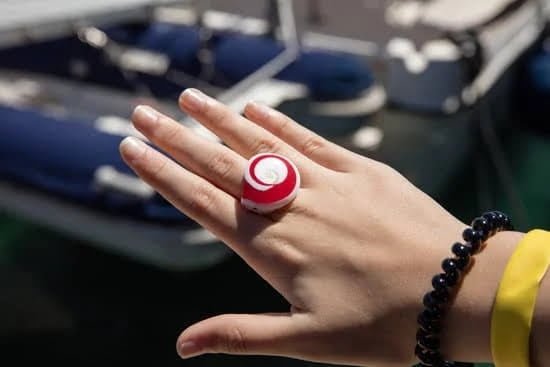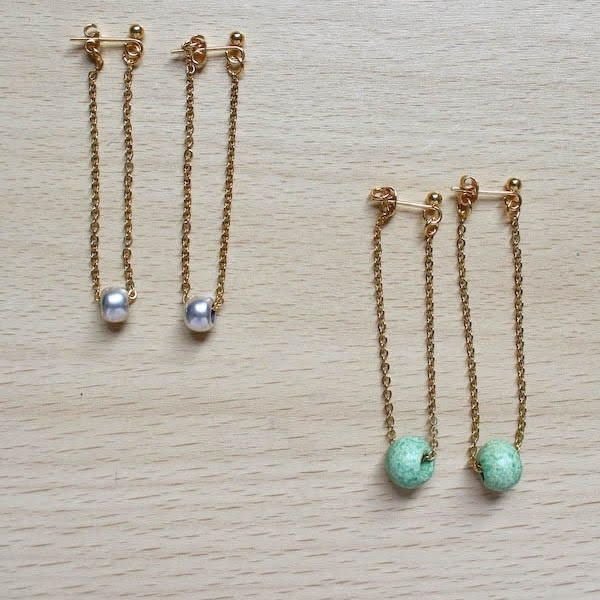Jewelry is not only a beautiful accessory to enhance our personal style, but it also holds sentimental value and represents special moments in our lives. However, over time, dirt, oils, and tarnish can accumulate on our precious pieces, dulling their sparkle and diminishing their allure.
That’s why regular cleaning of your jewelry is crucial to maintain its beauty and longevity. In this article, we will explore the importance of cleaning your jewelry regularly and the impact that dirt, oils, and tarnish can have on its appearance.
When we wear jewelry every day or even occasionally, it comes into contact with various substances such as sweat, makeup residue, lotions, and more. These substances can build up over time, creating a layer of grime on the surface of your jewelry. Not only does this make your jewelry lose its shine and sparkle, but it can also potentially damage the metal or gemstones if left untreated.
Additionally, tarnish is a common issue with certain metals like silver or even gold-plated jewelry. Tarnish occurs when these metals react with elements in the air or come into contact with certain chemicals. This can result in a darkening or discoloration of your jewelry.
By regularly cleaning your jewelry DIY-style using effective methods and solutions tailored to different types of materials and gemstones, you can restore their original brilliance and extend their lifespan. Not only is DIY cleaning affordable compared to professional services or expensive commercial products but it also allows you to have full control over the ingredients used in the cleaning process.
In the following sections of this article, we will delve into various aspects of DIY jewelry cleaning – from understanding different cleaning methods based on specific needs to step-by-step instructions for creating homemade cleaning solutions for gold, silver, costume jewelry as well as techniques for caring for gemstone pieces.
By following these tips and techniques for at-home jewelry maintenance laid out in this article, you’ll be able to keep your jewelry gleaming and exquisite for years to come.
Types of Jewelry Cleaning Methods
When it comes to cleaning your jewelry, there are various methods available, each suited for different types of pieces. It is essential to determine the best approach for cleaning your jewelry based on the material, gemstones, and settings it contains. Understanding these cleaning methods will help you maintain the beauty and longevity of your precious pieces.
One popular method for cleaning jewelry is using a jewelry cleaning solution specifically formulated for that purpose. These solutions are readily available in the market and are designed to effectively remove dirt, oils, and tarnish from various types of jewelry. They often come with detailed instructions on how to use them safely and efficiently.
Another common approach is using a mild soap and water solution. This method is suitable for many types of jewelry, especially those without delicate gemstones or intricate designs. You can create this solution by mixing a small amount of mild dish soap or hand soap with warm water in a bowl. Gently scrubbing your jewelry with a soft brush or toothbrush dipped into the soapy solution can help remove dirt and grime.
Ultrasonic cleaners are another option that utilizes sound waves to clean jewelry by creating microscopic bubbles that gently remove dirt particles from hard-to-reach areas. However, this method may not be suitable for all types of jewelry, as it can damage certain gemstones or delicate settings.
| Jewelry Type | Recommended Cleaning Method(s) |
|---|---|
| Gold | Jewelry cleaning solution or mild soap and water solution |
| Silver | Jewelry cleaning solution or mild soap and water solution |
| Gemstone | Mild soap and water solution or specialized gemstone cleaner |
| Costume | Mild soap and water solution or gentle cleaning wipes |
By considering the material, gemstones, and settings of your jewelry, you can determine the most appropriate cleaning method to ensure optimal results while minimizing any potential damage. Regularly cleaning your jewelry using the right approach will not only maintain its appearance but also prolong its lifespan, allowing you to enjoy your sparkling pieces for years to come.
DIY Cleaning Solutions for Different Types of Jewelry
Cleaning your jewelry doesn’t have to be an expensive or time-consuming task. In fact, you can effectively clean your pieces using simple DIY solutions that you can make at home. Whether you have gold, silver, or costume jewelry, these homemade cleaning solutions are effective and affordable. Follow these step-by-step instructions to bring back the shine and luster to your favorite pieces.
Cleaning Gold Jewelry
- Fill a bowl with warm water and a few drops of mild dish soap.
- Place your gold jewelry in the soapy water and let it soak for about 15 minutes.
- Use a soft-bristled toothbrush to gently scrub away any dirt or debris from the surface of the jewelry.
- Rinse the jewelry thoroughly under running water and pat dry with a soft cloth.
Cleaning Silver Jewelry
- Line a bowl with aluminum foil.
- Add 1 tablespoon of baking soda and 1 tablespoon of salt to the bowl.
- Pour boiling water into the bowl until the jewelry is fully submerged.
- Let the jewelry sit in this solution for a few minutes, allowing the tarnish to transfer from the silver to the aluminum foil.
- Remove the jewelry from the solution, rinse it under running water, and pat dry with a soft cloth.
Cleaning Costume Jewelry
- Mix equal parts of warm water and gentle liquid soap in a bowl.
- Place your costume jewelry into this solution and let it soak for a few minutes.
- Gently scrub each piece with a soft brush or toothbrush to remove any built-up dirt or oils.
- Rinse the jewelry under running water, making sure not to wet any glued areas, and gently pat dry with a soft cloth.
These DIY cleaning solutions are effective for most types of jewelry and are gentle enough to protect the integrity of your favorite pieces. Remember to always use a soft-bristled brush or toothbrush, and avoid harsh chemicals or abrasive materials that can damage the jewelry’s surface. Regularly cleaning your jewelry using these homemade solutions will ensure that they retain their beauty and shine for years to come.
Tools and Materials Needed for DIY Jewelry Cleaning
To successfully clean your jewelry at home, you will need to gather a few essential tools and materials. These items are crucial for achieving effective results while ensuring the safety of your precious pieces. Here is a comprehensive list of what you will need:
- Soft-bristled toothbrush: A soft-bristled toothbrush is perfect for gently scrubbing dirt and grime off your jewelry without causing any damage. It can reach into small crevices and tight spaces, making it an essential tool for cleaning intricate designs.
- Mild liquid dish soap: Diluted dish soap is an excellent cleaning agent for most types of jewelry. Avoid using harsh chemicals or abrasive cleaners as they can damage or strip away the finish on your pieces.
- Microfiber cloth or lint-free cloth: These types of cloths are ideal for drying and buffing your jewelry after cleaning, as they are soft and won’t scratch the surface. They also help in bringing out the shine in your pieces.
- Toothpicks or wooden sticks: These can be used to remove dirt or debris lodged in hard-to-reach areas such as between gemstones or within chain links.
- Ammonia solution (for gold, silver, and diamond jewelry): A diluted ammonia solution can be used to restore the luster of gold, silver, and diamond jewelry specifically. However, exercise caution when using ammonia solutions and avoid prolonged exposure, especially with delicate gemstones or pearls.
- Baking soda (for silver jewelry): Baking soda mixed with water creates a gentle paste that works wonders on tarnished silver jewelry. It helps remove tarnish without scratching the metal.
- 7.Cotton swabs: Cotton swabs are useful for applying cleaning solutions to specific areas of your jewelry where a brush may not be able to reach easily.
- 8.Jeweler’s polishing cloth (optional): A jeweler’s polishing cloth can be used to give your jewelry a final shine. These cloths are treated with special compounds that help restore shine and remove tarnish.
Remember, before you start cleaning your jewelry, always read any care instructions specific to each piece and consider its material, gemstones, and setting. Now that you have the necessary tools and materials at hand, you can proceed to clean your jewelry effectively and safely.
Cleaning Gold Jewelry
Gold jewelry is a timeless and valuable investment that deserves proper care and cleaning to maintain its luster and beauty. Cleaning gold jewelry regularly not only helps remove dirt, oils, and tarnish but also extends its longevity. In this section, we will explore the best practices and techniques for cleaning gold jewelry, ensuring that it sparkles like new.
Step 1: Gather the Necessary Materials
Before you begin cleaning your gold jewelry, gather the essential tools and materials needed for the process. You will need a soft-bristle toothbrush or a clean cloth, mild dish soap or jewelry cleaner specifically formulated for gold, warm water, and a soft microfiber cloth for drying.
Step 2: Preparing the Cleaning Solution
To create an effective homemade cleaning solution for your gold jewelry, you can mix a few drops of mild dish soap with warm water in a bowl. Make sure not to use hot water as it may damage certain gemstones or loosen settings. Stir the solution gently to create suds.
Step 3: Cleaning Your Gold Jewelry
Place your gold jewelry in the bowl containing the cleaning solution. Allow it to soak for about 15 minutes to loosen any dirt or residue. After soaking, use a soft-bristle toothbrush or cloth to gently scrub away any remaining dirt or tarnish from the surface of your gold pieces.
Be cautious while cleaning around delicate stones or intricate details to avoid scratching or damaging them. For hard-to-reach areas, you can gently use a cotton swab dipped in the cleaning solution. Once you are satisfied with the cleanliness of your gold jewelry, rinse it thoroughly under warm running water to remove any soapy residue.
Step 4: Drying and Polishing
After rinsing off all traces of soap from your gold jewelry, pat it dry using a soft microfiber cloth. Avoid using paper towels or tissues as they may scratch the metal’s surface. Gently polish your gold jewelry with the cloth, applying gentle pressure to restore its natural shine.
It is important to note that while these cleaning techniques are suitable for solid gold jewelry, they may not be appropriate for gold-plated pieces or those with delicate gemstones. For such items, it is best to consult a professional jeweler for specialized cleaning instructions.
By following these best practices and techniques for cleaning gold jewelry, you can ensure that your precious pieces retain their brilliance and allure for years to come. Regular maintenance and care will keep your gold jewelry looking as beautiful as the day you first acquired it.
Cleaning Silver Jewelry
Silver jewelry is a popular choice for its beauty and versatility, but it is prone to tarnish over time. Tarnish occurs when silver reacts with sulfur or other chemicals present in the air, causing it to darken and lose its shine. It is essential to clean silver jewelry regularly to remove tarnish and restore its brilliance. In this section, we will explore effective techniques for cleaning silver jewelry and preventing future tarnish.
Step 1: Prepare a Cleaning Solution
Before cleaning your silver jewelry, you will need to prepare a cleaning solution. One popular method is to create a simple mixture of warm water and mild dish soap. Fill a bowl with warm water and add a few drops of dish soap. Stir the solution gently until it creates suds.
Step 2: Soak the Jewelry
Once you have prepared the cleaning solution, you can proceed to soak your silver jewelry in it. Place the pieces in the bowl and ensure they are fully submerged in the soapy water. Let them soak for about 5-10 minutes to loosen any dirt or tarnish.
Step 3: Clean with a Soft Cloth or Brush
After soaking, take each piece of silver jewelry and gently scrub it with a soft cloth or brush. Be sure to reach all crevices and intricate details. Avoid using abrasive materials that may scratch the surface of the silver.
Step 4: Rinse and Dry
After cleaning, rinse each piece of jewelry under running water to remove any soap residue. Pat them dry with a soft cloth or towel, being careful not to rub too hard as this might cause scratches.
To prevent future tarnish on your silver jewelry, consider storing it in an airtight container or using anti-tarnish strips or pouches when not wearing them. Also, avoid exposing your silver jewelry to chemicals such as perfumes, lotions, or household cleaners, as these can accelerate tarnish formation.
By following these techniques for cleaning and preventing tarnish on your silver jewelry, you can restore its brilliance and keep it looking beautiful for years to come. Remember to clean your silver pieces regularly to maintain their shine and luster.
Caring for Gemstone Jewelry
Gemstone jewelry is not only beautiful but also valuable, making it essential to properly clean and maintain these pieces to preserve their brilliance and longevity. Cleaning gemstone jewelry requires extra care and attention to ensure that the gemstones are not damaged or discolored in the process. Here are some guidelines for safely cleaning and maintaining your gemstone jewelry:
- Determine the Type of Gemstone: Different gemstones have varying levels of hardness and sensitivity to chemicals. Before cleaning your gemstone jewelry, identify the type of gemstone you are dealing with. Common gemstones include diamonds, rubies, sapphires, emeralds, amethysts, and opals.
- Gentle Cleaning Solutions: To clean gemstone jewelry, prepare a gentle cleaning solution by mixing a few drops of mild dish soap or liquid hand soap with lukewarm water. Avoid using harsh chemicals or cleaners as they may damage or discolor the gemstones.
- Soak and Gently Scrub: Place your gemstone jewelry in the cleaning solution and let it soak for around 15-20 minutes. Then, use a soft-bristled toothbrush or a brush with natural bristles to gently scrub the piece, paying special attention to areas where dirt might be trapped.
- Rinsing and Drying: After scrubbing, rinse the jewelry thoroughly under running water to remove any soap residue. Use a soft microfiber cloth or lint-free towel to pat dry your piece gently.
- Avoid Heat and Ultrasonic Cleaners: It’s important to note that certain gemstones should not be exposed to high temperatures or ultrasonic cleaners as they can cause damage. Examples include opals, pearls, turquoise, amber, and coral. Instead, stick to mild cleaning methods like gentle soaking and brushing.
- 6.Protective Measures: To prevent scratches or damage when storing your gemstone jewelry, it’s best to individually wrap each piece in a soft cloth or tissue paper. Additionally, avoid exposing your jewelry to harsh chemicals, strong sunlight, or extreme temperatures.
By following these proper cleaning and maintenance techniques, you can ensure that your gemstone jewelry remains in pristine condition for years to come. Remember, regular maintenance is key to preserving the beauty and value of your precious gemstone pieces.
Cleaning Costume Jewelry
Costume jewelry is a popular and affordable way to accessorize any outfit, but it can quickly lose its sparkle due to dirt and oils. Luckily, with a few simple steps, you can easily clean your costume jewelry and restore its shine.
To begin cleaning your costume jewelry, start by removing any loose dirt or dust using a soft cloth or brush. Be gentle to avoid scratching the delicate materials. Next, create a cleaning solution using warm water and mild dish soap. Avoid using harsh chemicals or abrasive cleaners as they can damage the jewelry.
Once you have your cleaning solution ready, dip a soft cloth or toothbrush into it and gently scrub the surfaces of your costume jewelry. Pay special attention to any areas that may contain built-up dirt or oils. Remember to be gentle and avoid excessive rubbing to prevent any stones or embellishments from coming loose.
After scrubbing, rinse your costume jewelry under clean running water to remove any residue from the cleaning solution. It’s crucial to thoroughly dry your pieces before storing them to prevent tarnish and corrosion. Use a clean, soft cloth to dry each piece individually, ensuring there is no residual moisture.
In addition to regular cleaning, it’s essential to protect your costume jewelry when not in use. Store each piece separately in a soft cloth or jewelry pouch to prevent scratches and tangling. Avoid exposing the jewelry to excessive humidity, heat, or sunlight as these factors can accelerate tarnishing.
By following these simple steps for cleaning and caring for your costume jewelry, you can keep your accessories looking sparkling and fresh for years to come at minimal cost. With just a little effort, you can enjoy wearing your favorite pieces without worrying about them losing their shine.
Storing and Maintaining the Cleaned Jewelry
After putting in the effort to clean your jewelry and restore its sparkle, it’s essential to know how to properly store and maintain your precious pieces. Proper storage techniques not only prevent tarnishing but also protect your jewelry from scratching and other damage. Here are some important tips to help you keep your newly cleaned jewelry looking its best:
First and foremost, it’s important to store your jewelry in a clean and dry place. Exposure to moisture can lead to tarnish, so avoid storing your jewelry in the bathroom or any other area prone to high humidity. Instead, opt for a cool, dry location like a jewelry box or drawer.
When it comes to storing different types of jewelry, it’s crucial to separate them to prevent scratching. Use individual compartments within your storage container or invest in small velvet or fabric pouches for each piece of jewelry. This will ensure that delicate gemstones won’t get damaged by rubbing against metal or other gemstones.
Another important consideration is avoiding exposure to sunlight and harsh chemicals. UV rays can cause discoloration over time, so it’s best to store your jewelry away from direct sunlight. Additionally, keep your pieces away from household cleaners, perfume, hairspray, and lotions as these can damage certain metals and gemstones.
Regular maintenance between cleanings is also key to keeping your newly cleaned jewelry looking its best. Gently wipe down your pieces after each wear with a soft cloth or microfiber cloth to remove any oils and dirt that may have accumulated throughout the day.
By following these simple storage and maintenance practices, you can ensure that your cleaned jewelry remains shiny and beautiful for a long time. Taking proper care of your pieces will not only keep them looking their best but will also extend their longevity so you can enjoy wearing them for years to come.
Conclusion
In conclusion, embracing the DIY approach to cleaning and maintaining your jewelry can lead to clean and sparkling pieces that you can proudly wear. Regularly cleaning your jewelry is crucial for preserving its appearance and longevity. Dirt, oils, and tarnish can dull the shine of your jewelry and even cause damage over time. By taking the time to clean your pieces regularly, you are ensuring that they remain beautiful for years to come.
Throughout this article, we have explored various methods for cleaning different types of jewelry, including gold, silver, gemstone, and costume jewelry. We have provided step-by-step instructions on creating homemade cleaning solutions and using them effectively. The DIY approach not only allows you to tailor the cleaning method to suit the specific needs of your jewelry but also offers an affordable alternative to professional cleaning services.
By following the recommended techniques and best practices outlined in this article, you can successfully remove tarnish, restore brilliance, prevent future damage, and maintain the cleanliness of your jewelry in between cleanings. Additionally, we have provided guidance on proper storage techniques to protect your precious pieces from tarnishing, scratching, and other potential damage.
So why not give the DIY approach a try? Not only will you save money by avoiding professional cleaning services but you will also become more confident in caring for and maintaining your own jewelry collection. Embrace the DIY approach and enjoy the sparkle and beauty of clean jewelry every day.
Frequently Asked Questions
What is the best home remedy to clean jewelry?
One of the best home remedies to clean jewelry is using a mild dishwashing soap and warm water. Simply mix a few drops of the soap in a bowl of warm water, then gently scrub your jewelry using a soft-bristle toothbrush or a lint-free cloth.
Be sure to pay attention to hard-to-reach areas and crevices, then rinse the jewelry thoroughly under running water. This method is generally safe for most types of jewelry, including gold, silver, and diamond pieces.
Is there a natural way to clean jewelry?
Yes, there are several natural ways to clean jewelry that can be effective without harsh chemicals. One commonly used method involves creating a solution by mixing equal parts white vinegar and water. Soak your jewelry in this solution for around 15-20 minutes, then gently scrub with a soft toothbrush before rinsing it off under running water.
Another natural option is using baking soda and water to create a paste that can be applied to tarnished silver or brass items. Rub the paste onto the jewelry using a soft cloth or sponge, then rinse well afterward.
Does hydrogen peroxide clean jewelry?
While hydrogen peroxide may have disinfectant properties, it is not recommended as a primary cleaner for all types of jewelry. Hydrogen peroxide can potentially oxidize or discolor certain gemstones, such as pearls, opals, or emeralds due to its bleaching effect.
It may also damage delicate materials like enamel or certain precious metals if left in contact for an extended period of time. Therefore, it’s generally safer to use milder cleaning agents like dish soap or natural solutions when cleaning your jewelry at home instead of hydrogen peroxide alone.

Welcome to my jewelry blog! My name is Sarah and I am the owner of this blog.
I love making jewelry and sharing my creations with others.
So whether you’re someone who loves wearing jewelry yourself or simply enjoys learning about it, be sure to check out my blog for insightful posts on everything related to this exciting topic!





